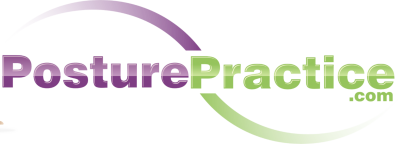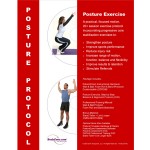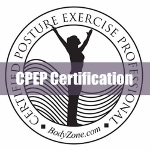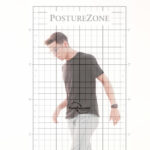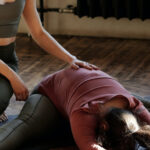StrongPosture® and Volleyball – Injury Prevention and Performance
Poor posture causes abnormal weight bearing on joint surfaces and excessive stress on musculoskeletal structures of the body leading to injuries over time. Poor posture will affect the balance and alignment of the body causing limited range of motion in movements that are important to volleyball and the athlete functioning at optimal level.
Volleyball Injury and Postural Adaptations
There are a few common postural abnormalities that are seen in the volleyball athlete that can be corrected using StrongPosture® assessment and exercises that can prevent injury and improve performance. Common postural abnormalities seen in a volleyball athlete are forward head/rounded shoulders and lordosis. These abnormalities are due to the motions necessary by the body to serve, spike, and play defense. As a result, certain muscle groups become tight and others weak. This creates a muscle imbalance that leads to a change in the way the body balances, aligns, and moves. Strong Posture® exercises help to move the body toward symmetry, thus preventing injury and improving performance.
Power Serves & Spikes Contribute to FHP
A common postural issue is rounded shoulders and forward head posture. Volleyball accentuates powerful internal rotation movements of the shoulder for serving and spiking. The player frequently will have tight internal shoulder rotators and weak external rotator muscles. Due to muscle imbalance, the player’s stronger internal rotators will pull the shoulders forward. As the player’s shoulders are rolled forward, the neck will also be pulled forward.
Common injuries associated with this type of posture could be rotator cuff injuries, neck pain, and mid back pain. StrongPosture® exercises that stretch internal rotators and strengthen external shoulder rotators, as well as strengthen scapular retractors, are beneficial to prevent injuries and ensure optimal range of motion of neck, mid back, and shoulder. These exercises will assist the player in promoting the head to be level over the torso with shoulders back and down, ensuring the most powerful and accurate swing for spiking and serving.

Another common postural issue seen in volleyball athletes is lordosis or excessive curve of the low back. Tightness in hip flexors and low back, and weakness in abdominal and gluteal muscles causes the pelvis to tilt forward and lordosis to occur. Rounded shoulders and forward head posture commonly distort the lower part of the kinetic chain causing the top to roll forward and bottom/pelvis to roll backward.
The StrongPosture® Defense
 Adding to this issue, volleyball defense requires the player be bent over in flexion to be ready to move to receive the ball from a serve, pass, or spike. Commonly, volleyball players do not perform a squat with correct alignment, adding to the issue of lordosis. Strong Posture® exercise promoting stretching the hip flexors and low back and strengthening core, as well as gluteal muscles, assist in pulling the pelvis down to be in alignment with the torso.
Adding to this issue, volleyball defense requires the player be bent over in flexion to be ready to move to receive the ball from a serve, pass, or spike. Commonly, volleyball players do not perform a squat with correct alignment, adding to the issue of lordosis. Strong Posture® exercise promoting stretching the hip flexors and low back and strengthening core, as well as gluteal muscles, assist in pulling the pelvis down to be in alignment with the torso.
For example, one of the strong posture exercises is ball squat. This exercise promotes a squatting motion while maintaining correct alignment and balancing the body toward symmetry. This exercise will assist in defensive volleyball posture maintaining the correct alignment and balance while moving to receive the ball. This will assist the player in being able to move quicker and more efficiently for serve receive and defense.
Volleyball Performance Training
Posture is the way in which a person balances their body. Poor posture requires more energy to maintain balance and increases the likelihood of injury due to poor alignment. Teaching StrongPosture® exercises can assist the volleyball athlete in using less energy during play, improving swing and accuracy, and moving on defense in a more efficient way to optimize performance.
Author: Contributed by Meghan Walton, Occupational Therapist serving the Indianapolis, IN community with The Prather Practice.
- At-home patient rehab. 7 Steps to StrongPosture® is the online at-home program for patients that integrates education and exercise designed to blend easily into your workflow. Subscribe to offer the program to your patients & clients >>>
- CE Approved online education. Posture and Balance Assessment, Rehabilitation & Motor Control Exercise >>>
- Complete in-office rehab program. Pro Training Manual, Patient Handouts and more >>>
To learn the StrongPosture® program get the Posture Rehab Exercise Program and take the online CE course. Take it to the next level with CPEP® Posture Specialist Certification!
